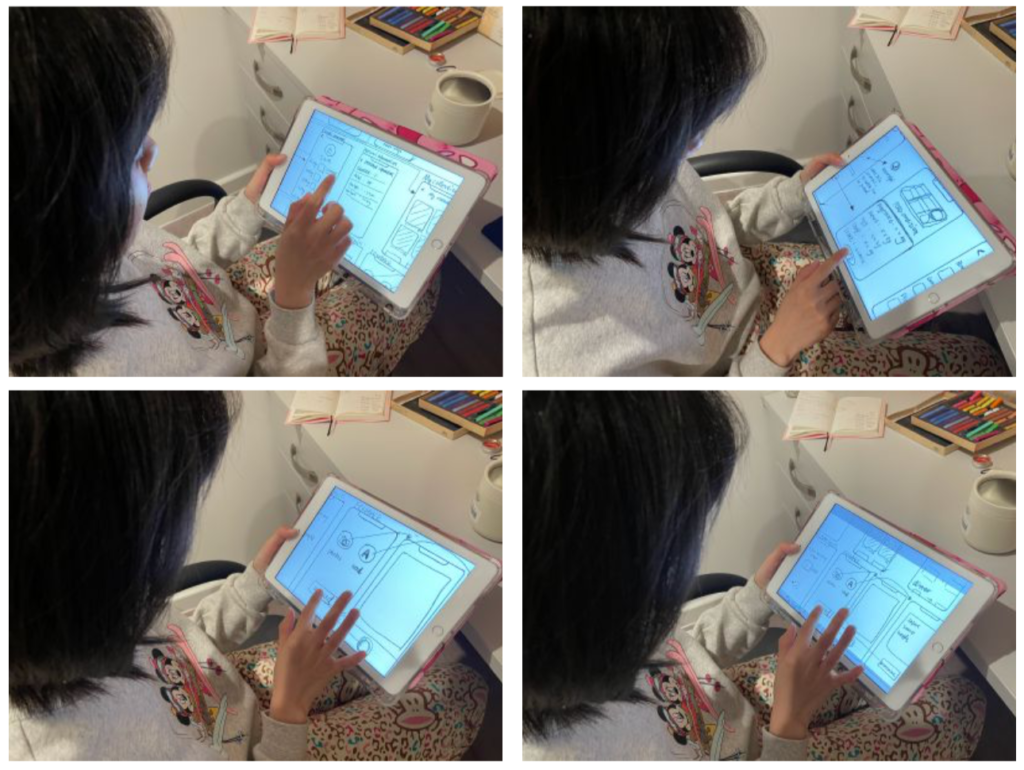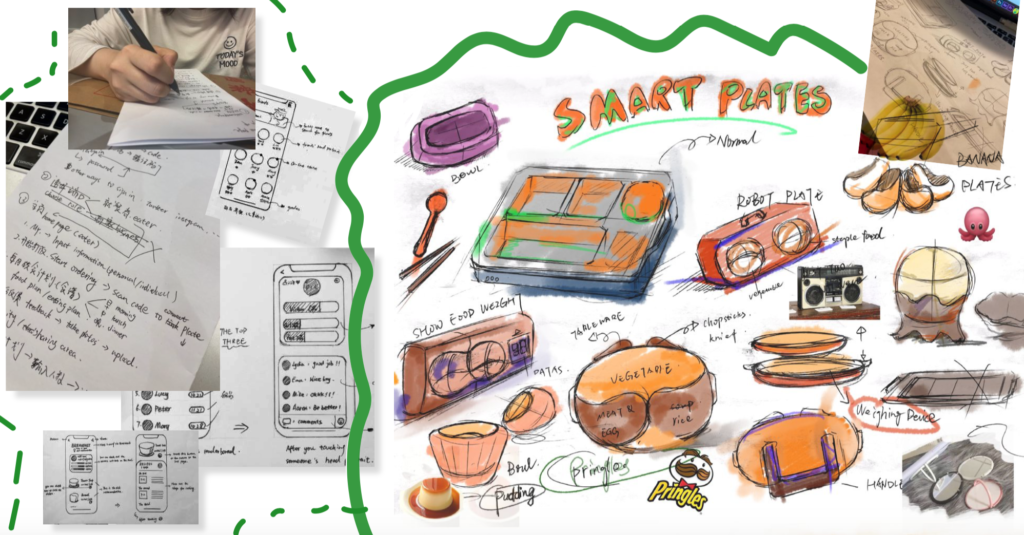Introduction
Norman (2016) said in his article “The Future of Design” that with the fundamental advances in science and technology and other aspects, design based on craftsmanship can no longer meet the current needs of mankind. The impact on environmental issues and social turbulence has also diminished invisibly, which made me realize that humans need a new form of design. Designs generated by personal inspiration and intuition can no longer solve the problems in our lives. As Norman(2016) said, current design needs to be based on understanding human limitations and mastering relevant technologies. Human-oriented design thinking is what society needs now. Therefore, the birth of interaction design played a very important role.
At the beginning of the course, I did not have a lot of understanding of interaction design, which made me feel confused and frustrated when I was working on the project. However, because the course deepened and the reading volume of materials increased, I enriched the design method and design skills and fully understood the user’s psychology. In the following report, I will show the knowledge, application and reflection that I have gained in the process of learning.
Describe ——‘What I learned’
At the beginning of all projects, we would be provided with a brief, which contains the theme of the project and all the requirements. In the process of reading, it not only improved my language reading ability, but also enhanced my comprehension ability. At the same time, I also gained a way to write a brief. A good brief allows us to better sort out our design ideas and design results when the project is about to end. It was a very valuable experience for me.

Figure 1. The 5C Model(Norman, D. A, 2016)
Next, I want to review a problem-solving technology that runs through all my projects-5c model, which is one of the most important knowledges I learned this semester. It included ‘collect’,’comprehend ‘,’conceptualize’, ‘create’ and ‘collaborate’. Friis, SAK, & Gelting, AKG (2014) divided the horizontal axis of the 5C model into two distinct ‘areas’ :” one is to produce knowledge about the existing situation; the other is to produce knowledge about the future situation.” In the early stage of a project, I usually use ‘collect’ and ‘comprehend’ to obtain information and generate insights to help myself understand user behavior. When there were mature research results, I was always using ‘conceptualize’ and ‘create’ to brainstorm to put forward design solutions.
The research of Chiu (2002) showed that good teamwork can promote design communication and thus contribute to the success of design projects. Although we did not carry out a team project due to the covid-19, the students still maintained communication and interaction. We shared ideas about the project with each other and I think this is also an alternative cooperation. During the subsequent project three and projects four, I conducted online and offline prototype tests with my classmates, and received lots of feedback, which made me get more ideas and suggestions from it. This has provided me a great help.
After completing projects two, three and four, I learned to build user modeling techniques. The persona, empathy map, user journey map and other models allowed me to determine my design direction more clearly. At the same time, in project four, I fully learned the software for making high-fidelity prototypes and interface dynamic effects, which made my work more diverse and interesting. What impresses me is that the production of the paper prototype in the second project has improved my hands-on ability and made my thinking more active, which has greatly helped me.
In the process of the project, I fully understood the importance of design thinking. It specifies the principle of putting people first when applying design to the entire new field (Norman, D. A.,2016). This kind of people-oriented design thinking allows me to design different products according to different Users and different problems, which improve the current bad situation.
At the same time, the article reading and weekly lectures also brought me more interactive knowledge and fresher design information. As a designer, we must always maintain a sharp aesthetic. Without good visual output, no matter how good a product is, it will not fully play its role. Just as Norman (2016) said ‘Design as Both Craft and a Way of Thinking’, only a design that combines wonderful vision and dialectical thinking is a truly excellent design.
Interpret ——‘The meaning of my learning’
Project experience sharpens my insights. I usually screen my design schemes from the perspective of users, and strive to create products with excellent user experience. But because of this, some people will walk into misunderstandings in the design process. In order to better understand users, they will overemphasize user data. However, the article by Swette (2017) mentioned that the general truth is not necessarily data, but thinking from a human perspective. Data is only auxiliary to solve the problems. The existence of empathy in design is the real soul. A study by Gasparini (2015) shows that Designers can gain insight into user needs through empathy and inform the design process.
Evaluate —— ‘Usefulness of my learning’
Our curriculum is a learning mode that combines theoretical research and practice. This mode can help us use the knowledge acquired from books and other materials in real projects. At the same time, this experience can help us avoid paper talk in future work. Every project is a good opportunity to apply research to practice.
First of all, theory and research can help us better clarify the design process, find and determine the target group so as to better define the product I want to design. Constantly learning related theories also gave me a deeper understanding of interaction design. Norman (2016) renews my definition of design: Design can be the role of the fusion of craftsmanship and design thinking. This fusion makes our design visually attractive and can further enhance the usability of the product.
While studying the theory, I also continued to practice in the project. Through the experience of these four projects, I realized that iteration based on user feedback was the most effective way to upgrade and improve my products, which is the most useful knowledge I have gained from practice. According to the project of Tracy Ma (2020), we can also see that the publishing method is also changing from traditional publishing to online publishing. It can be seen that the most important thing is that the design must meet the needs of the current people.
In a word, theory and practice complement each other, use the knowledge learned from school or books to design the project, and at the same time further summarize more useful and scientific theories and methods from the process of project design.
Plan ——‘how to do in the future?’
After one semester of study, I strengthened my determination to become a professional interaction designer. In the future design life, I will apply all the experience I gained in the process of learning to real projects. Through a semester of interactive design study, I have fully understood the design process. From analyzing data to building user models, from drawing sketch to completing product design, I spent a lot of energy to make the biggest attempt. When I encounter a new problem, drawing a mind map is a very effective way to sort out my thinking. A mind map can split the big problem into multiple parts, which is more helpful to think and come up with more better design solutions.
At the same time, in the future design career, it is inevitab for me to take part in the team work. Although team collaboration is very difficult under COVID-19, I still use other methods, such as video communication, emails, etc., to interact and collaborate with my friends and classmates. It has fully improved my teamwork ability and help us better brainstorm ideas. Secondly, the crit of each project also has a great impact on me, which allows me to report my design results more freely in the workplace and fully accumulate presentation experience.
But the most important thing is that in future designs, I will make full use of people-oriented design ideas, put users first, and design more humane products to make people’s lives more convenient. Irene Au has a good saying “Good design is like a refrigerator—when it works, no one notices, but when it doesn’t, it sure stinks.” And as a designer, it is my never-ending pursuit to benefit people invisibly.
Reference list
Chiu, M. L. (2002). An organizational view of design communication in design collaboration. Design studies, 23(2), 187-210.
Friis, SAK & Gelting, AKG., 2014. ‘The 5C Model’, Paper presented at DesignEd Asia Conference, Hong Kong 2014, 02/12/2014 – 03/12/2014.
Gasparini, A., 2015. Perspective and use of empathy in design thinking. In ACHI, the eight international conference on advances in computer-human interactions, pp. 49-54.
Norman, D. A.,2016,The Future of Design: When you come to a fork in the road, take it. Available at: http://www.jnd.org/dn.mss/the_future_of_design.html (Accessed 12 May 2021).
Swette, R., 2017. Examples of Insights for Design. Available at: <https://medium.com/ux-data/insights-for-design-real-anecdotes-b84309a8fc40> [Accessed 12 May 2021].
Published
2021/05/14 at 12:52 am







